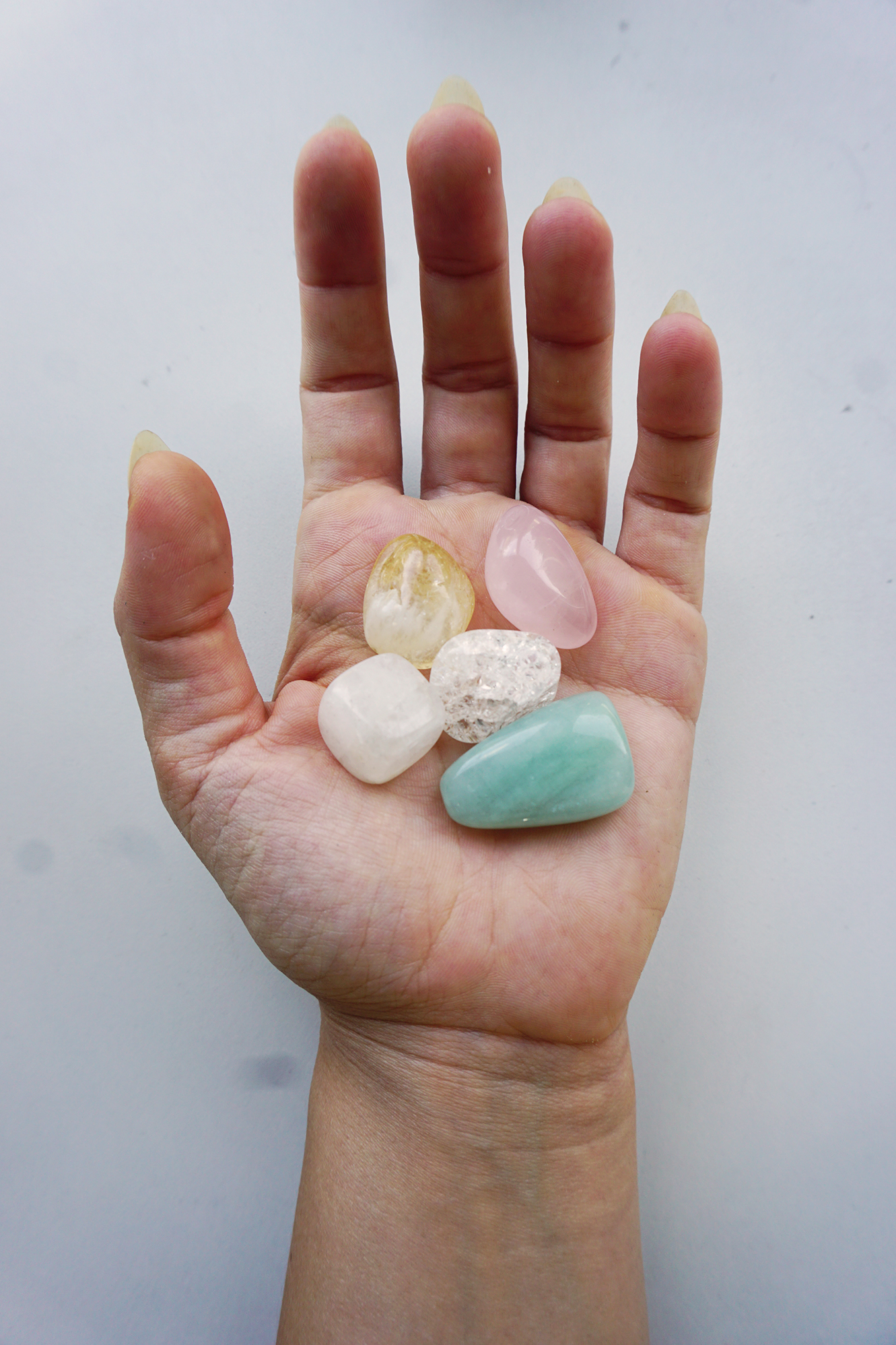Hello everyone! In today’s impact analysis we’ll be looking at crystals. Over the last few years, the popularity of crystals has been increasing fast, as has the rest of the wellness industry, which is worth billions of dollars. Today a wide range of consumers are finding crystals beautiful, useful, or healing – and a lot of you guys have noticed the increasing popularity of crystals as well because this topic has been requested many times, so let’s talk about the environmental impact of crystals.
also check out: Shein is much worse than any other fashion brand – here is why
What are crystals, and how are they made?
The simple definition of a crystal is “any solid material in which the component atoms are arranged in a definite pattern and whose surface regularity reflects its internal symmetry” – “a highly ordered microscopic structure, forming a crystal that extends in all directions.” The process of crystal formation via mechanisms of crystal growth is called crystallization, or solidification. The word “crystal” comes from the ancient Greek “krustallos” which means both “ice”, and “rock crystal” – derived from the word “kruos” meaning “icy cold frost”.
Crystals form in nature when molecules gather to stabilize when liquid starts to cool and harden, this is basic crystallization, and it happens when magma hardens or when water evaporates from natural components.
I think this might be a pretty good place to add a disclaimer of bias here. I don’t personally find any deeper meaning or sensation of healing in crystals. I don’t personally believe in cleansing chakras or auras and I have always been quite sceptical regarding alternative medicine and wellness. Now, that doesn’t mean that I can’t respect other people’s beliefs. I think many different things can bring meaning to different people, and there isn’t anything wrong or less about believing one thing over another. Personally, my “spirituality” lies with exploring and understanding the universe, by reading astro-and quantum physics which has been incredibly beneficial to my mental health. I don’t think there is anything wrong with looking to minerals and crystals for meaning or calm. What I do have a problem with however is billion dollar-corporations commercialising a belief system and preying on vulnerable people that are looking for healing and answers. My quarrel is not with crystal lovers, it is with the industry that produces them and distributes them to consumers, proclaiming to care about spirituality, health and our inner goddesses, while deliberately exploiting the environment and violating human rights. So, let’s get into it.
also check out: HOW DO YOU KNOW IF A BRAND IS SUSTAINABLE / making eco decisions 101
How are they harvested?
Yeah for lack of better wording, crystals are “harvested” by mining. Just like with many other types of materials and minerals, it is just as damaging. Mining a small amount of crystal often requires much larger quantities of material to be destroyed or relocated. And this wasn’t always a problem, prior to the rise in, especially Western, demand for crystals the small number of crystals that were mined didn’t cause the same type of harm – however with rising demand the amount of areas destroyed for the product is much greater – and thus cause much more damage to the natural environment. And the demand is rising fast, in 5 years the demand from American consumers has doubled.
also check out: The rise of fast furniture
Water contamination
It is really hard to say “mining” without saying “water pollution”, and crystal mining is certainly not an exception. The Tyrone Copper mine in New Mexico, which also supply crystals and gem stoles is responsible for leaking 2 billion gallons of acid and heavy metals into surface and groundwater supplies each year.
also check out: The impact of microplastic and how to avoid it
Soil erosion and deforestation
Crystals are a non-renewable resource, they take thousands, some millions, of years to form, so once a natural area has been stripped of its minerals it’s not going to come right back. Regions largely affected by mineral and crystal mining operations are seeing rapid sinkhole formation and massive loss of biodiversity.
also check out: Are electric cars actually more sustainable?
Human rights
Now that was talking about the environmental consequence, but the human aspect is important to consider here as well, it’s not CEOs who are digging for crystals. Actually, the majority of crystals sold to Western consumers do not, or cannot disclose the origins of their products because the crystal supply chain has just about zero transparency. This means that the industry is rife with forced labour, child labour and human rights violations. The sad thing is the companies that are making millions of dollars selling crystals and other wellness products take no responsibility. In the Democratic Republic of Congo children as young as 7 are working in mines because their small size allows them to excavate gems and crystals for larger mining corporations. In Myanmar, the jade mining industry is referred to as the new blood diamonds. The New York Times has called jade mining in Myanmar “the biggest natural resource heist in modern history.” The excavation of jade in Myanmar has helped finance a bloody ethnic conflict as well as fuelled an epidemic of heroin use and HIV infection among the ethnic minorities who work in the mines – partly due to drinking water pollution in the mining villages. Madagascar’s underground has been known to be rich in minerals, gemstones and crystals. While it is one of the poorest countries in the world, the fast-growing export of gems and precious metals rose 2017 by 170%. However, there is little to no labour regulation, and about 80% of the crystals mined from Madagascar are mined in smaller groups and family operations, which means that there are absolutely no regulations in place and lots of room for exploitation. So these people are not getting properly paid for their, dangerous, labour, that’s for sure. Workers in Madagascar have known to carry 60 kg stones 4-5 kilometres several times a day, only to be paid 1 dollar (Tess McClure, The Guardian, 2019). In 2018 over 17.000 people signed a petition to have Goop sell more ethically mined crystals, however, the company never responded to the petition. Personally, that is very unsurprising in my opinion because Goop is definitely one of the top tier companies that are preying on the vulnerability of spirituality, commercialising it and capitalising and exploiting this belief system – just look at how many products they are, or have, carried that pose literal health risks
also check out: The Impact of Chocolate // environmental and social analysis of our favourite treat
Regulation (or lack thereof)
Now, as I mentioned the companies that sell crystals to consumers don’t always list their supplier or the origin of their crystals, and as the report from New Republic explores, it is not always done out of malice, or to cover something up – often no one knows, because the supply chains of long and complex and affected by the same lack of regulation that makes the industry perfect for exploitation, that also means that so many traces of where our products come from are erased. Companies don’t buy crystals directly from the mines, they buy from resellers and traders so a crystal can have had a dozen different owners before you buy it. There are actually no international regulations or requirements to track the steps of gems and crystals, so all consumers can do is hope that their supplier is telling the truth. But there is really no political and governing body to make sure that that is happening. There is a system for tracking and regulating diamonds, although that is far from ensuring ethical and sustainable practices, but I digress. There are also no certifying authorities like we see with many other materials like wood or cotton. However, if it helps, Canada, Finland, Argentina, Botswana, Spain and the Philippines have the strongest sustainable mining regulation currently.
also check out: The Environmental Impact of Cryptocurrency
Conclusion:
Because of the faulty supply chains and huge risk of human exploitation, I would advise everyone to consume crystals with the same caution as any other high-impact product. Just like mining silver and gold is high impact and those products should be consumed consciously, just like the mineral in our cell phones are causing environmental havoc and should be consumed consciously, so should crystals. And just like I am a firm believer in jewellery made from recycled silver and gold, just like my phone is second-hand, I also advise you to look for a preloved option when it comes to these wellness products, or at the very least consume them minimally and consciously. The industry seems to disregard the efforts to improve under the notion that “consumers don’t seem to care” or that “other products also cause damage and pollution to the environment” both statements that feel shallow and honestly pretty infuriating. As such it’s not a bad idea to continually demand that the big wellness brands take responsibility. It smells of hypocrisy that the products marketed for “wellbeing” has directly been responsible for so much human trauma.
Furthermore, I think it is important to reflect on why we might have a need or curiosity about crystals, one reason, for some, might be because they are so represented on social media, because they are, for lack of better wording, trending right now. Now that doesn’t mean that you can’t try it out or explore the use of alternative healing and wellness, but just like with fashion trends, we have to be careful not to buy tons of things in the spur of the moment because it is on trend, but rather we have to invest in things we’ll cherish and love for a long time. And that is definitely also the case here.




